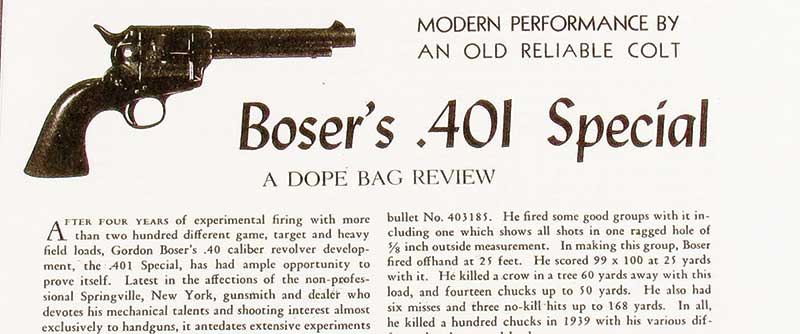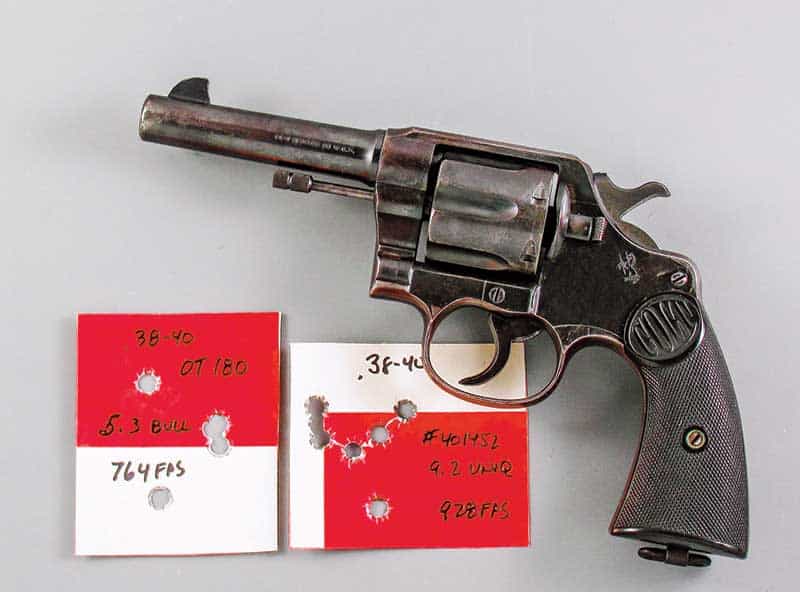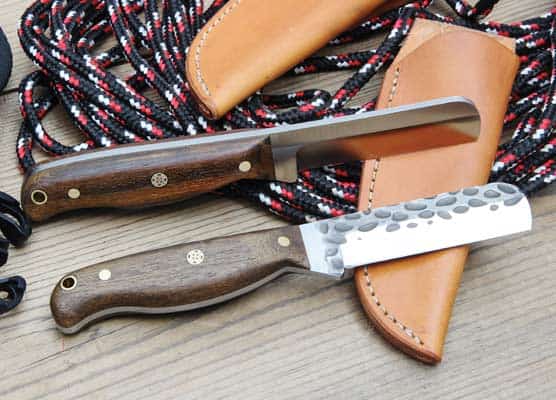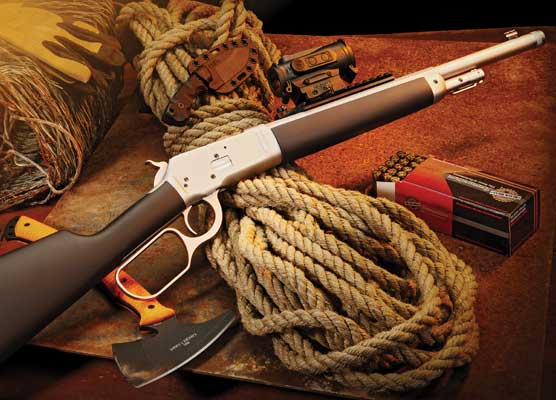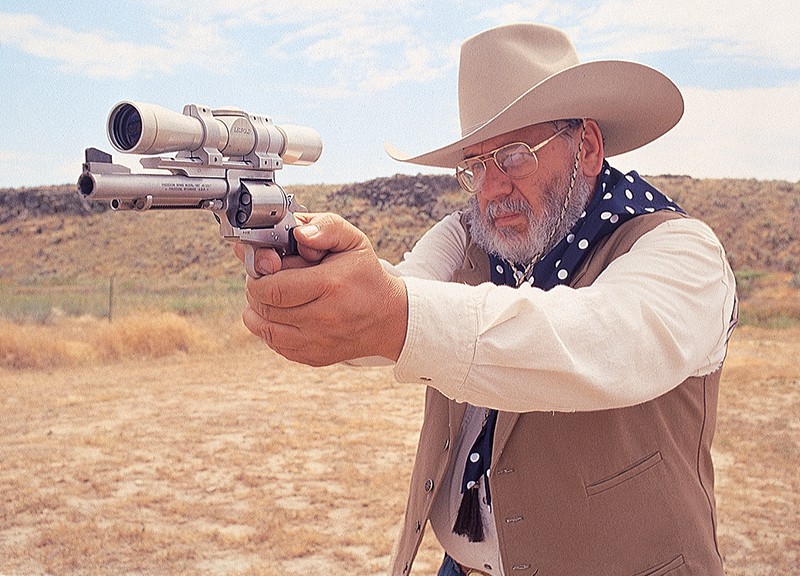‘Cordially, Gordon Boser’
Tales from the .40 past
A few weeks ago I received a packet of information from one of our readers. As so often happens, this proved to be a gold mine of information. One of the things the reader sent along was a copy of a handwritten letter written to his father dating back 70 years. The letter was from Gordon Boser and is here reprinted for posterity. Boser was a gunsmith and a sixgun wildcatter dating back to the 1940s, known for his work with the .40 sixgun cartridge, which was definitely in the Magnum category. One major warning as you read this letter — DO NOT even consider using some of the .44 Special loads he references. Here is the reproduced letter:
Springville, N.Y.,
February 4, 1949
Dear Sir:
Your letter of the 10th at hand and note your comment on #5066 as used in the .45 Colt Long Ctg. I assume that you might go as high as 8.3 grains of this powder with #454424 bullet, and this would be the equivalent of 8.5 grains of #5. I used the .45 Colt very much in years gone by and found it extremely accurate, but not as good a killer when handloaded as the .44 Special. Although it is superior to the .44 in factory loads. I recall using the WRA .45/60-300 grain bullet ahead of as much as 8.5 grains Unique and a velocity of 850 fps and this was a very powerful load. Still it lacks the power of the .44 Special with the Thompson Gas Check 225 grain #431225 hollowpoint backed by 20.5 grains #2400.
That .401 you mentioned is still at hand and is the most powerful arm of the short gun type I ever seen. It beats the .357 Magnum by 30% and my best .44 Special safe load as well. Using the Boser #403185-192 grain solid, 1-15 bullet ahead of 19.0 grains #2400. This bullet makes a dent in a 1/4″ steel plate. That makes the top .357, .44 Special, or .45 Colt loads looks sick.
It’s quite a long story. All of the changes wrought in the old Single Action Army, non-breakable action, etc., stronger parts, the development of more than 500 loads, all new dies, duplex and straight charges and many bullets over a period of 10 years. I used the WRA .401 rifle cases and had to build a jig to cut them off to 1-1/4″ length. I built molds for experimenting and finally adopted a 200-grain, wide hollowpoint and 18.5 grains #2400 as the top chuck, deer, and fox load.
I used a .38-40 Colt Single Action Army 5-1/2″ barrel with a groove diameter of 0.402″. The cylinder was a Colt SAA .357 Magnum cylinder chambered for this case with bullet throats of 0.404″ and sized my bullets 0.403″. I also worked over .303 Savage cases with a great deal of cutting, reaming and sizing. The heavy bushing, etc. making the arm adequate for the high pressures, were built over a great period of time as the need became apparent. I also had to have loading tools made up for the cause.
I would say that even if one could get a barrel and cylinder, which cannot be done in view of the fact the old SAA is gone for good. It wouldn’t be worth the trouble. I say this because soon S&W will bring out their Model 1926 .44 Special and for this you can get the Remington non-cannelured cases and load a .44 Special load of 21.5 grains of #2400 behind the Keith #429421 or 20.5 grains behind the Thompson #431225 HPGC or as much as 22.0 grains behind the Thompson-Boser #431205 hollowpoint. That is good enough for anything you will ever use a pistol on. This too, would eliminate all the trouble and expense of building up a .401.
The .44 Special loads mentioned above should be attempted only by the most experienced handloader and start at least 2.0 grains below the above-mentioned charges and work up. Only new select cases should be used, bullet sized 0.001″ over groove diameter.
I suggest you write Ray Thompson, Box 216, Grand Marais Minnesota mentioning my name and asking for samples of those gas check, hollowpoint bullets. These are the most advanced design obtainable and they eliminate leading, and incidentally uniform velocities and pressures result. The designs as a whole are conducive to the finest accuracy and full killing power.
Thanking you for your letter and inviting your further communication in case I can help you.
I am cordially
Gordon Boser
This letter is definitely a gold mine of sixgun information, however again I caution DO NOT follow his recommendations for loading the .44 Special. When this was written .44 Special cases were of the balloon-head or folded-head variety which had more case capacity than today’s solid head brass. However, you will notice his loads are above Elmer Keith’s Heavy .44 Special loads when using this older brass. Keith used 18.5 grains under his #429421 bullet which is three grains less than recommended by Boser. When solid head brass appeared in the early 1950s Keith cut his charge to 17.0 grains.
Boser also mentions the return of the .44 Special S&W Model 1926 in this letter from 1949. A very few 1926 Models were made after WWII, however just one year later the finest double action .44 Special sixgun ever produced arrived as the S&W 1950 Target. This sixgun was used as the platform for the .44 Magnum, however it took special heat treating and a longer cartridge case to handle loads close to those mentioned by Boser in this letter.
Boser designed a special bullet, Lyman #401452 for his .401 Special. This bullet weighs just under 200 grains with my alloy. It is a semi-wadcutter design as it was and is Keith’s #429421. I use Boser’s .401 bullet in the .38-40 today. In the early 1960s the then-well-known mail-order company Herter’s brought out their .401 Powermag, a single action sixgun produced in Germany. This was a bull-strong revolver also offered in .357 Magnum and .44 Magnum, and was also very close in performance and design to Boser’s .401 Special. He also designed a .44 Special bullet, Lyman #429360. I have found this bullet to not be as accurate as the Keith bullet. I also noted the high praise Boser paid to Ray Thompson’s bullet designs. I concur totally. His gas checked bullets are still some of the best available for .357 Magnum, .44 Special, .44 Magnum, .45 Colt and .45 Auto Rim.
Magnum sixgun cartridges did not just appear out of the blue. Before the .357 Magnum there was Keith’s Heavy .38 loads and he also spent nearly 30 years pushing his Heavy .44 Special loads. We have also mentioned John Lachuk’s .44 Lancer and Boser’s .401 as well and there was Pop Eimer’s earlier version all of which laid the groundwork for the .44 Magnum and .41 Magnum.
